Why Do I Need to Guide?
It is near impossible to do deep space photography without doing long exposures. To do long exposures and not get star trails, you will need to guide. So, what do you need to start doing deep sky photography? Let’s look.

Guiding
The gear you need specifically to start guiding is,
· An ASI Guide Camera
· A Guide scope or OAG
· An equatorial mount capable of guiding
· The correct software and hardware to control the guiding. i.e. the ASIAIR
Selecting Your Guide Camera
The ASI Mini series includes three cameras each with different specifications to choose from. What they all have in common is that they are monochrome/black and white and are very sensitive.
ASI120MM Mini

Retail Price – 149 USD
Sensor – 1/3” CMOS AR0130CS
Resolution – 1280×960
Pixel Size – 3.75μm
The ASI120 Mini is an entry-level guide camera that is more affordable than the two other options. The 3.75μm pixel size provides a good level of sampling accuracy. If you have no special requirements in your guide camera then the ASI120 Mini is for you.
ASI290MM Mini

Retail Price – 299 USD
Sensor – 1/2.8” CMOS IMX290
Resolution – 1936×1096
Pixel Size – 2.9μm
The ASI290 Mini is positioned as a more precise guide camera as it’s smaller pixel size of 2.9μm provides a higher sampling accuracy than the ASI120. This means that the ASI290 can detect smaller movements in a star to keep your guiding smoother and more accurate.
ASI174MM Mini

Retail Price – 499 USD
Sensor – 1/1.2” CMOS IMX174LLI
Resolution – 1936×1216
Pixel Size – 5.86μm
The ASI174 Mini is a large-view guide camera. The 1/1.2” sensor is four times the size of the 120 and 290’ sensors. This extra field of view makes it easier to find stars, this comes in especially helpful when using an OAG.
ASI Mini Accessories
The Mini cameras all have the same threading to attach accessories. They can be fitted with a C-mount lens and a CS-port lens as well as a 1.25” filter.
1. M28.5-CS adapter ring 2. CS-C adapter ring

2. 1.25′′ extension tube

Guide Scopes
ZWO 30F4 Mini Guide Scope
As the perfect partner to the ASI Mini series we designed and developed the ZWO 120F4 Mini Guide Scope.
The ZWO Mini Guide Scope was designed to accompany smaller telescopes. This guide scope has an aperture of 30mm and a focal length of 120mm. Weighing in at just 250g this is a perfect light weight and stable guide scope.

ZWO 60280 Guide Scope

This classic style guide scope has a 60mm aperture and a 280mm focal length. The ZWO 60280 Guide Scope has a lockable helical focuser to easily achieve and maintain perfect focus. Being a larger guide scope, this is designed towards larger telescopes, with an aperture of 8-10 inches.
Off-Axis-Guider

An off-axis-guider (OAG) is a completely different way of guiding. Instead of having a separate guide scope, the OAG fits between your primary imaging camera and the telescope. Your ASI Mini guide camera sits at the top of the OAG and a small prism will redirect some of the light from your telescope up to the guide camera. However, the prism only redirects a small portion of your field of view, meaning it can be hard to find a star to guide from.
While more difficult to set up due to the guide camera and main having to be parfocal, many people consider OAG’s to yield better results over guide scopes. These results are typically only observable in longer focal length telescopes 1,500mm or more. This is because longer focal length guide scopes are needed to have more accurate guiding with long focal length primary telescopes, so using your main imaging scope as the guide scope as well can give amazing results. Having an OAG also minimises any flexure from the guide scope.

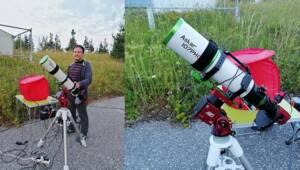

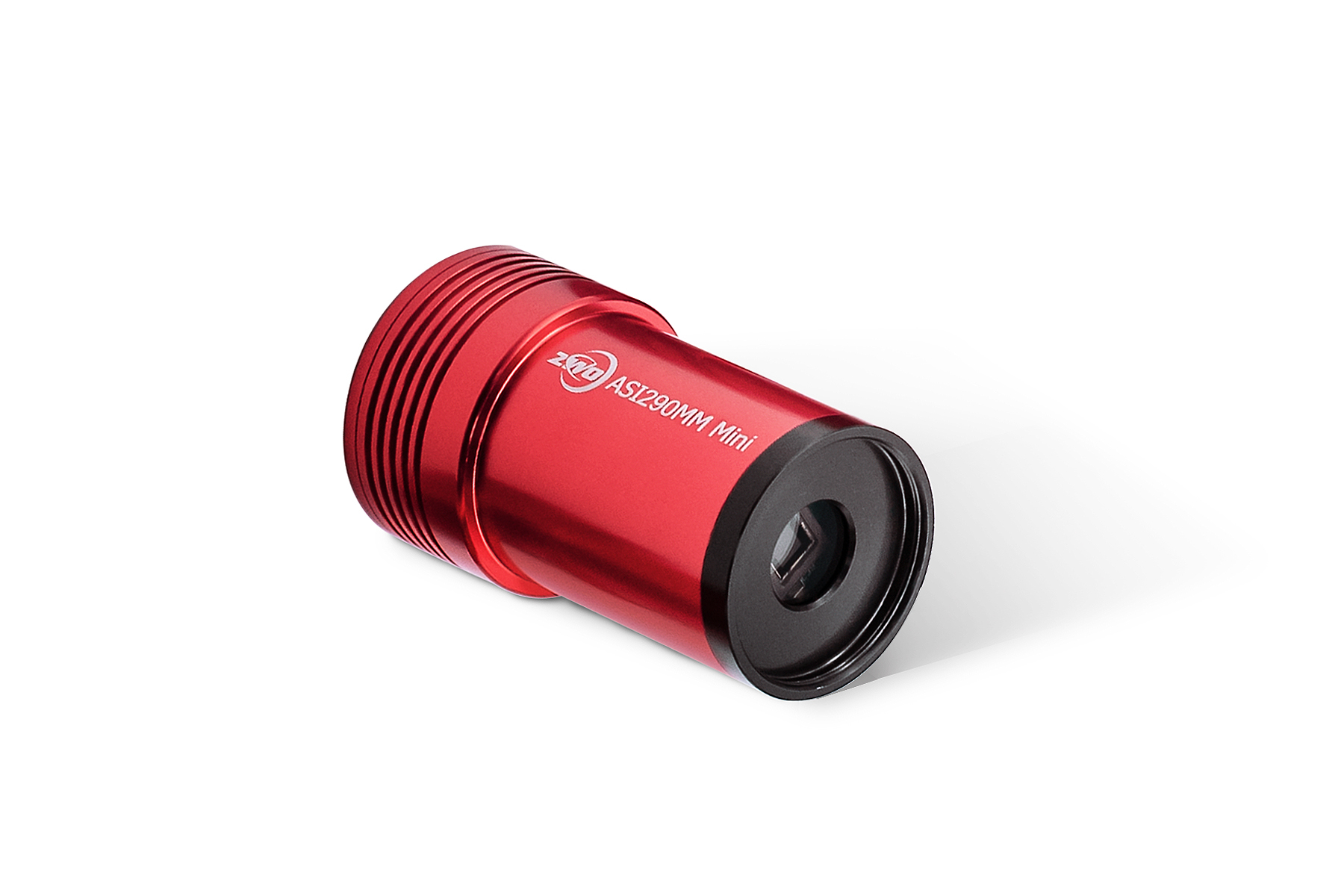










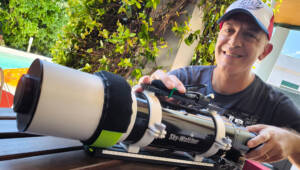
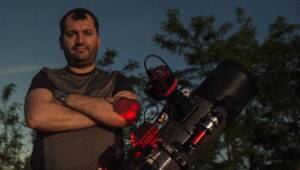
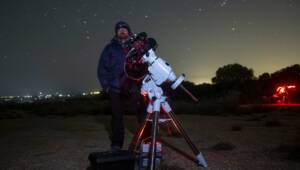
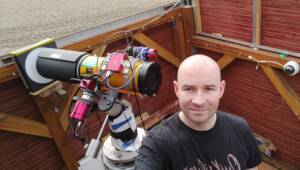
23 Comments
Biian
Can as I 290 mc work as a oag?
Katherine Tsai
Yes you can but please pay attention to the back focus since you will need to get focus.
Steven
Hi – Hope you are all safe and able to avoid CO19. Very grim.
I have issues with achieving parfocal between guider and imaging camera, and am considering using the 290. But I don’t understand the numbers.
My camera is a 1600MM pro directly attached to your EFW-8 1.25″. With shims that is 27.5mm to the ASI OAG. I am using (and will replace) the Atik Infinity guider which has 13mm backfocus, screwed into the OAG 42mm camera mount. That did not allow common focus. To become parfocal I used a 10mm spacer between the EFW and the OAG. That allowed common focus, but with little space to spare. And there is vignetting, for sure from the OAG mirror, and otherwise from either the spacer or the 48mm and 2″ spacers in front of the OAG.
The scope is a Celestron C11 with the f6.3 reducer, at 105mm from the focal plane.
Will the 8.5mm backfocus of the 290 solve my problems of being parfocal and eliminating vignetting? The numbers as I measure make it look very close unless I use at least a 5mm spacer between the EFW and OAG, since there is 4.5mm difference in backfocus of the 290 and the Infinity. If I calculate:
Imaging side distances: 6.5 (1600) + 20 (EFW) +1 (shims) + 6 (back edge of OAG to mirror centerpoint) = 33.5mm
Guider side: 30mm (OAG mirror stalk) + 8.5mm (290 backfocus) = 38.5mm MINIMUM
So it looks like I still need 5mm spacer, minimum, between the EFW and the OAG to be parfocal and that would be with the OAG mirror stalk right up against the guider cover glass.
Is this analysis correct? If so I need a camera with less backfocus than your guiders to get rid of the vignetting.
thanks,
Steve
Katherine Tsai
Attached the link of back focus for your reference.
55 mm back focus
Kevin
I have seen the 120mm mini being used by someone set up with it and was very impressed, so I have purchased one myself along with a 30F4 guide scope. I am having trouble focusing the guide scope and guide camera – even in dark skies I get no stars at any combination of exposure lengths, gain, or adjustments of the focus barrel.
Is there a basic focus guide you can direct me to? I realise this only needs to be done once, but I have been unable to get any useable results from the camera.
I have verified that I am getting the expected basics – I do get signal to my PC as I can put my hand partially illuminated in front and see the difference in output, but when pointed at the sky, I get nothing but a flat, slightly noisy field no matter my settings. I have varied exposure lengths in increments from 100ms through to 8 seconds and adjusted the gain from black to white and regular focus adjustments all the way through to the very end of the tube right before it detached from the threading!
Moson
You could adjust the focus of the guide scope on a distant mountain or building in the daytime. Or you could try pull out the 120MM mini a little from the guide scope.
Michael
HI – I had the same issue. You need to place the camera in just enough to secure it with the telescope screws. Then you need to screw the front element of the guide scope out almost to the end of its run. Focus can be found by then adjusting the position of the camera, or the position of the scope front element. It is very laborious to find focus with this setup. Definitely do it during the day with distant trees or something, It is impossible to do at night. I actually ended up buying the two helical focuser and attaching it to the scope to make it easier to fiine tune my focus.
Moson
Thank you for sharing us with your solution of finding focus on guide scope and guide camera.
John
one question if your using an OAG, is the focal length you input into the guide camera section in the asi air pro app the same as the main cameras focal length?
ZWO.Moson
Yes, it’s same.
AdAstra
Hi
My pc only has usb 2.0, I’m using an ASI 533 as primary imaging and a 120 MM mini as guiding. Both cameras are plug to the pc using their own cables. Concidering the ASI533 has usb 3.0, would there be any concern about bandwith, data loss or whatever if I plug the 120MM in the 533 (which would be better in term of cable management)?
Thanks
Support@ZWO
Don’t worry, the guide camera can be plugged into main camera usb hub.
AdAstra
Thank you very much!
Will try.
Jason Dain
What camera would be best for the ZWO OAG with a 1500mm focal length? Trying to use the 120MM Mini and not having much luck.
Support@ZWO
Hello
174mini has the largest sensor in the guide cameras
it will be easier to get more star via the OAG
Joe
My telescope is C8” with 2000mm focal length. My imaging camera zwo asi533mc pro my guide camera is ZWO asi290mm mini. I am using OAG for the set up with no reducer. When I input my guide scope focal length into the settings what figure should this be please. Help my head hurts so many numbers….
Support@ZWO
the guide scope length should be 2000 as well
Greg Swank
I have recently purchased the ASI120MM Mini and ZWO 120F4 and am having trouble getting a clear image at night. When I first got them I was able to get clear image from a light on a building 100 yards away, but when I set up outside and try to focus it on the moon or stars, I can’t seem to get a clear image. I can see it the image become more blurry when I focus further or closer, but in the middle, there seems to be a wide range where it looks like the lens is foggy, even though it isn’t. I am using SharpCap to view the image, and have tried some of the focusing tools that are included with little success. I can’t tell if there’s chromatic aberration, something is configured wrong, or if I’m expecting too clear of an image for a single lens element scope. I haven’t got a successful guide test yet, but I can’t tell if that’s been from bad seeing conditions, or a bad focus. Is there a way to test the focus, so I can ensure that isn’t the problem?
sara.liu
Please send email to support@zwoptical.com
Bob
I acquired an ASI290MM (not mini) to use with a 50mm guide scope… but this does not seem to be your recommended camera for guiding. Should I be using the ASI290MM mini instead?
Thank you…
sara.liu
No need.
Bob
I am using a ASI290MM (NOT mini) as my guide camera and an ASI2600MC-P as my main camera. Can I attach the 290MM to the USB hub on the 2600MC-P? Will both cameras connect to my Windows laptop via the single USB cable connecting the 2600MC-P (OR my ASIAIR Plus… when it arrives)?
Thank you,
bob
sara.liu
Yes.